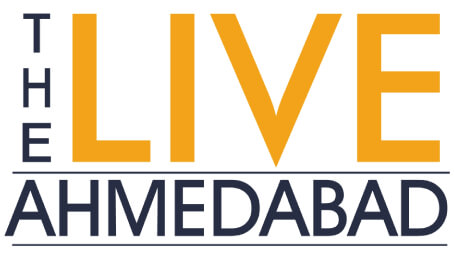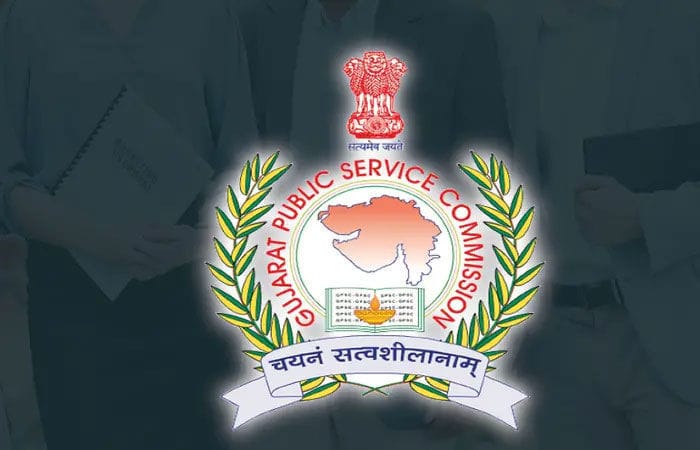The Gujarat Public Service Commission (GPSC) announced a new syllabus for the ‘General Studies’ subject on Saturday.
A uniform syllabus for all the prelim exams is announced for Class 1-2-3, relieaving the students from different preparations for the prelims of different posts.
To benefit the GPSC aspirants, the authorities decided on a unified syllabus for general studies which ensures that candidates appearing for different exams do not need to prepare separately each time.
The change is for various examinations conducted by the commission including preliminary exams, combined competitive exams, direct recruitment exams for Class 1/2, and general knowledge exams for Class 3 under boards/corporations.
The syllabus of the General Studies examination to be held on February 23, 2025 will remain as announced earlier.
For the examinations to be held on March 16, 2025, the new syllabus of ‘General Studies’ will have to be followed instead of the previously announced syllabus of General Studies.
Full GPSC syllabus
Indian History and Heritage
- Indus Valley Civilization, Vedic Age, Jainism, and Buddhism
- Connection with Central Asia and its outcomes
- Ancient, Medieval, and Modern India, as well as the main dynasties of Gujarat. Their rulers, administrative systems, social, religious, and economic conditions, etc.
- Bhakti Movement and Sufism
- Arrival of Europeans in India and their struggle for supremacy. Company rule in India, establishment and expansion of British rule, the 1857 Freedom Struggle in India and Gujarat, 19th-century religious and social reform movements in India and Gujarat, movements for Indian independence, and Indian revolutionaries in India and abroad.
- National leaders and their contributions to various fields
- Post-independence India and Gujarat
- Cultural heritage of India and Gujarat: Art forms, literature, sculpture, architecture, music, dance, etc.
- Saint traditions of India and Gujarat and their influence on the collective consciousness.
- Living traditions of India and Gujarat: Fairs, festivals, food, clothing, etc.
- Cultural hubs of Gujarat, libraries, cultural-religious-literary significance, Gujarati theatre: Plays, songs, and various theatre groups, etc.
- Tribal life: Festivals, fairs, clothing, religious diversity, etc.
- Gujarati literature: Streams, trends, notable writers, literary works, literary institutions, Gujarati language and dialects, etc.
- Pilgrimage and tourism spots in Gujarat and India.
Indian Polity, Constitution, Social Justice, and International Relations
- Indian Constitution: Its origin and evolution, characteristics, significant features, important amendments, the basic structure doctrine, and federalism-related matters.
- Constitutional Institutions: Their powers, functions, and responsibilities—legislative, regulatory, and quasi-judicial bodies.
- Institutions of local self-governance.
- Judiciary in India: Structure, functions, judicial review, public interest litigation, landmark judgments, etc.
- India’s foreign policy: International relations, significant organizations, agencies, various bodies, their structure, and functions, etc.
- Key policies and programs of the central and state governments.
Logical and Analytical Reasoning
- Critical and analytical thinking.
- Decision-making and problem-solving skills.
- General intellectual aptitude.
- Basic numerical abilities.
- Interpreting information: Charts, graphs, codes, data analysis, etc.
Economy of India and Gujarat
- Basic concepts and principles of economics.
- Pre-independence Indian economy: Planning mechanisms in India, models, and changes over time; new economic reforms, NITI Aayog, etc.
- Agriculture: Major crops, cropping patterns, irrigation, institutional structures—land reforms in India, technological advancements in agriculture, pricing policies, agriculture-finance policies, marketing, food security, public distribution systems, green revolution, sustainable and organic farming policies, etc.
- Industrial policies: Public sector enterprises, privatization, and disinvestment, growth and patterns of industrialization; small-scale industries, productivity in industrial sectors, Special Economic Zones (SEZ), foreign investments, and competition policies, etc.
- Infrastructure in India’s economy: Water supply and sanitation, energy and electricity, science and technology, rural and urban infrastructure, ports, roads, airports, railways, telecommunication, etc., including social impact assessments.
- Demographic trends: Growth rates, fertility, rural-urban migration, literacy, regional disparities, poverty and inequality patterns, unemployment—trends, structures, and national employment policies.
- Indian public finance: Taxation, public expenditure, public debt, subsidies in the Indian economy, financial relations between central and state governments, recent fiscal and monetary issues, GST, etc.
- Trends in India’s foreign trade: Post-reform balance of payments scenarios, trade structure, and direction.
- Gujarat’s economy: Social sectors like education, health, and nutrition, recent decades’ economic growth, agricultural issues, forests, water resources, mining, industries, and services, along with policies for infrastructural development.
Geography
- General Geography: Earth as part of the solar system, Earth’s movements, concepts of time and seasons, internal structure of the Earth, major landforms and their characteristics, atmospheric composition and structure, climatic elements and factors, air masses and weather systems, climatic disturbances, climate change, oceans—physical, chemical, and biological characteristics, hydrological issues, continental and marine resources, etc.
- Physical Geography: In the context of India, Gujarat, and the world—major physiographic divisions, earthquakes, landslides, natural drainage, monsoonal climates, climatic disturbances, cyclones, natural vegetation, national parks and sanctuaries, soil types, rocks, and minerals, etc.
- Human Geography: Population distribution, density, growth trends, sex ratio, literacy, occupational structure, Scheduled Castes and Tribes, ethnic and linguistic groups, rural-urban components, urbanization, migration, metropolitan areas, etc.
- Economic Geography: Major economic sectors like agriculture, industry, services, their main characteristics, basic industries—agriculture, mining, forestry, fuel, and labor-intensive industries, transport, trade, etc.
- Geography in the context of current flows.
Science and Technology
- Science and Technology: Scope and fields, everyday applications, relevance, and innovation policies, contributions by Indian scientists, etc.
- Information and Communication Technology (ICT): Scope and applications in daily life, governance, ICT policies, cyber security, etc.
- Space and defense technology: ISRO, DRDO, satellite missions, defense programs, etc.
- Energy needs and efficiency: Current energy requirements, sources, policies, etc.
- India’s nuclear policy: Peaceful usage, cooperation with other nations, treaties, and commitments.
- Environmental science: Laws and frameworks for environmental conservation, biodiversity, climate change, pollution, disasters, and India’s commitment to international protocols.
- Emerging technologies: Biotechnology, nanotechnology, their ethical, social, and legal implications, government policies, and human impact.
- Institutions associated with science and technology, their work, and contributions.
General Knowledge and Current Events
- Regional, national, and international importance.



